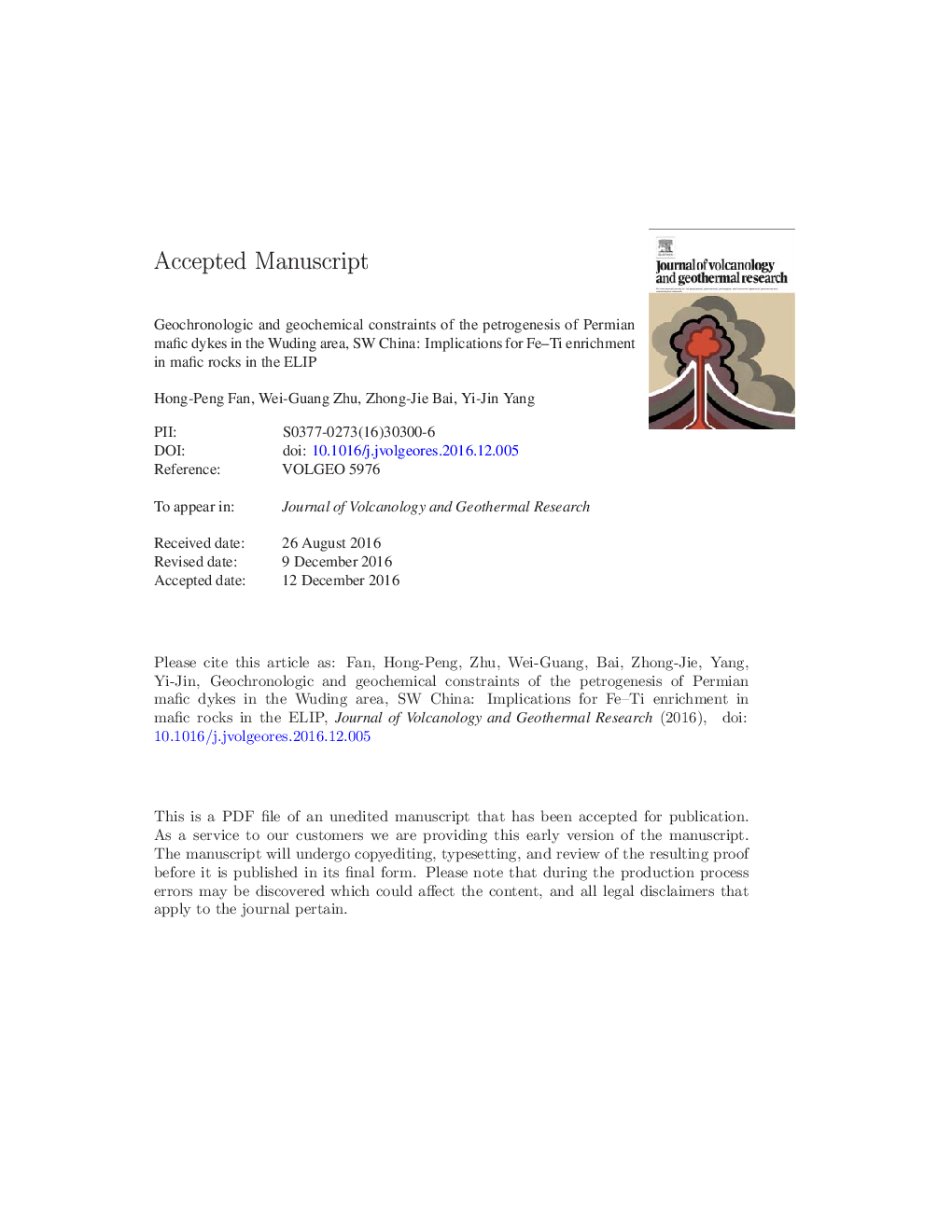| Article ID | Journal | Published Year | Pages | File Type |
|---|---|---|---|---|
| 5783941 | Journal of Volcanology and Geothermal Research | 2017 | 51 Pages |
Abstract
Mafic dykes are widely distributed and well preserved in the Wuding area, SW China. The dykes are composed of fine-grained diabases, which are further subdivided into two groups (Group I and Group II). The rocks from Group I have relatively higher MgO (4.95-6.16 wt%) and lower TiO2 (2.26-2.78 wt%) contents than those from the Group II rocks (MgO = 4.04-4.58 wt%; TiO2 = 4.09-4.55 wt%). Two baddeleyite ages of 264 ± 3 Ma and 256 ± 5 Ma from the Wuding dykes suggest that the ages of these dykes are similar to the plutonic bodies and the associated volcanic rocks of the Emeishan large igneous province (ELIP). The compositions and isotopic signatures of the dykes are also similar to those of the ELIP volcanic rocks, indicating derivation from the same magmatic event at ~ 260 Ma. The primary melts of the Wuding dykes were originated by partial melting of a long-term depleted OIB-like mantle source. The Group I dykes were mainly formed by wallrock assimilation and fractional crystallization processes. The magmas parental to the Group II rocks were much more evolved than the magma parental to the Group I rocks and probably produced by wallrock assimilation and fractional crystallization of the parent magma of the Group I rocks. The increasing enrichment of Fe and Ti from the Group I to the Group II rocks were attributed to a fractional crystallization process which may be an epitome of enrichment of Fe and Ti in the Fe-Ti rich mafic intrusions of the ELIP.
Keywords
Related Topics
Physical Sciences and Engineering
Earth and Planetary Sciences
Geochemistry and Petrology
Authors
Hong-Peng Fan, Wei-Guang Zhu, Zhong-Jie Bai, Yi-Jin Yang,
